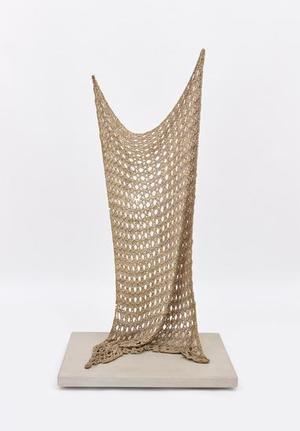Du 8 décembre 2016 au 28 janvier 2017
L’exposition comporte une nouvelle série de sculptures en bronze ainsi que des peintures à grande échelle et des œuvres sur papier.
Les sculptures sont des moulages de couvertures crochetées et tricotées à la main, dont beaucoup ont servi de modèles pour ses peintures abstraites. Recueillies au fil des décennies, ces textiles se prêtaient à différents modes d ‘« utilité » avant de devenir modèles physiques d’objets d’art. Grâce au processus du moulage, Grabner réinvente ces objets domestiques et s’appuie sur son médium pour changer la vision de ces objets quotidiens.
Pour créer ces sculptures, Grabner a d’abord fait la cire positive de la couverture qu’elle avait l’intention de couler. Le bronze fondu a ensuite été versé dans les moules, brûlant à la fois le tissu et la cire, sacrifiant ainsi le textile d’origine.
Comme l’écrit David Getsy dans le catalogue, “Grabner’s sculptures…conjure the blankets’ past lives. Her initial choice to use them as patterns for her works gave these textiles a new life and purpose, and in making paintings from their structures she honored the embedded intelligence in the domestic labor and traditions that produced them. This canny engagement with conventions of both sculpture and abstract painting combine to make a twofold case: first, for the powerful familial associations and intelligence born from traditional artist practices embodied by the blankets she chose and, second, for the larger place of such “women’s work” of making handmade textiles as crucial to major debates in Western art’s history. In their sophisticated layering of the meanings and uses of these blankets, throws, and afghans, Grabner’s sculptures demand a different kind of attention to the complexity and capacity of such traditional artistic practices, themselves often handed down generation by generation.

